new posts in all blogs
Viewing: Blog Posts Tagged with: Recent Posts, Most Recent at Top [Help]
Results 1 - 25 of 58
How to use this Page
You are viewing the most recent posts tagged with the words: Recent Posts in the JacketFlap blog reader. What is a tag? Think of a tag as a keyword or category label. Tags can both help you find posts on JacketFlap.com as well as provide an easy way for you to "remember" and classify posts for later recall. Try adding a tag yourself by clicking "Add a tag" below a post's header. Scroll down through the list of Recent Posts in the left column and click on a post title that sounds interesting. You can view all posts from a specific blog by clicking the Blog name in the right column, or you can click a 'More Posts from this Blog' link in any individual post.
A Monthly Column by Debra Beck, Author of
My Feet Aren’t Ugly, A Girl’s Guide to Loving Herself from the Inside Out
Hey, Teens, summer is here and for those of you that are going to enter the wonderful world of working for a living (or maybe just working for next years school clothes and having fun). Here are some job ideas. I am big advocate of entrepreneurial ship, working for your self. There are so many ways to create jobs for your self, and make more money,
I’m not quite sure why you would work for someone else. It is also going to be tougher this year to get a job, because of the current economic situation we are in. So that’s what makes creating your own job even more appealing.
When I look at the typical job for teens today like fast food restaurants, I think there must be a better way.
Besides working with teens and being an author, I have owned a few businesses. I love being my own boss, because I get to do things my way, it’s a great learning experience and best of all my hard work pay off, goes to me. Of course you may have some small start up costs, and costs of doing business, but then the rest is yours.

So here are some great business ideas for teens:
• Web Consultant- most teens I know have a way with computers and most adults I know struggle with it. Help them set up and manage Social Networking Sites (My Space, etc.?
• Nanny- if you like kids and your good with them, kids are out of school during the summer, but parents still have to work.?
• Dog Walker or Pet sitting- there is a young guy in my neighborhood that walks 5 dogs at once. I’m always looking for someone to help me with my animals. I pay $35.00 to $50.00 a night.
• Dog Washer- if someone had a service on a Saturday or anytime where I could just drop in and have my dogs washed or better yet you came to me, I would love that. All you need is water towels, dog shampoo and a location. I think if you charged $12.00 for a small dog, $16.00 for a medium, and $20.00 for a large dog, people would do it all day long.?
• Car Detailing- with a few supplies and a knowledge of what is clean and what is not, you could wash, wax, clean vents, and vacuuming right at their homes?
• Errand running- there are a lot of elderly people and people that are very busy that need help, just running errands or helping around the house with odd jobs.?
• Cleaning Service- if you have a sense of what is clean and what is not, this is a great business. Most of the time the people buy the cleaning products and you just go clean.?
• Tutoring- tutor a younger teen or child while going through summer school or with subjects they are having difficulty with. Parents love this one.
• Small business assistant- I used to always get teens to help me with different jobs for my business. They would come for 2 hours a day and I would have things like shredding, bookwork, cleaning, organizing inventory, so many things.
So, get a plan together, and start preparing because summer is here. Get the supplies you need, how many hours it will take, how much you are going to charge, who are you going to call, make flyers, post them, tell all of your parents friends, and ask if they know anyone that needs your help. I think working is a lot more fun, when you are your own boss, so go have some fun and make some money.
by Amy M. O’Quinn
The Statue of Liberty! One of America’s most well known landmarks, Lady Liberty has stood on her own island in the New York Harbor just southwest of Manhattan Island since 1886, and she has welcomed countless visitors and millions of immigrants to a new life in a new country. She has witnessed changes, joys, and even heartaches—yet she has stood the test of time and continues to be a beacon of hope and a representation for freedom for all Americans.

Did You Know?
Almost everyone knows that the Statue of Liberty was a gift from France to celebrate the friendship between the two countries and their common quests for freedom. But did you know that the French sculptor, Frederic Auguste Bartholdi, originally had the concept of placing the statue of a woman at the opening of the Suez Canal? Did you know that the Statue of Liberty functioned as a lighthouse from 1886 to 1902? Did you know that Lady Liberty’s right arm and torch were on display in Madison Square Park for six years while efforts to raise money to finance the statue and base? Did you know that the statue’s complete name is Liberty Enlightening the World?
Lady In Green
Here’s another neat fact. The Statue of Liberty is actually made of copper, but over the years hydrogen, oxygen, and carbon atoms from various substances in the air have combined with the copper atoms in the statue to make copper hydroxycarbonate (From Exploring Creation With Physical Science by Jay Wile). In other words, the copper has oxidized, and this chemical reaction has created a nice patina—or a green coating on the statue.
Changes
Trivia about the history of this famous landmark and statue statistics of the Lady are vast. Surprisingly, I experienced firsthand one of the changes the Statue of Liberty underwent back in 1984. When my high school classmates and I went to Washington and New York for our Junior-Senior trip, we were unable to disembark from our ferry onto Liberty Island and visit the statue because she was closed for repair and renovations. All of our photos showed the Lady from afar, encased in scaffolding. And although we were disappointed, we knew we were also witnessing a piece of history we would never forget! The Statue of Liberty National Monument reopened in 1986.
The Statue of Liberty was also closed after the 9/11 attacks in 2001. The monument reopened in 2004, and the crown and interior finally reopened last year (2009) on July 4th.
Resources About the Statue of Liberty
For a family activity, study the history and significance of the Statue of Liberty and the importance of her role in American culture. Below are some website/book suggestions:
Statue of Liberty National Monument website
Essential Big Apple: Statue of Liberty

The Statue of Liberty (Step Into Reading series) by Lucille Recht Penner

Lady Liberty: A Biography by Doreen Rappaport
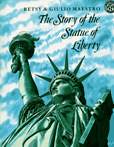
The Story of the Statue of Liberty by Betsy Maestro
 0 Comments on A Look at Lady Liberty as of 1/1/1900
0 Comments on A Look at Lady Liberty as of 1/1/1900
by Amy M. O’Quinn

Picnics, parades, patriotism and fireworks are on everyone’s mind as the Fourth of July approaches, and Americans everywhere will proudly fly the Stars and Stripes to commemorate our country’s quest for independence and freedom!
Yes, Old Glory will definitely be the star of the show in July since it is America’s most well-known icon, but there are many more symbols that represent this great country of ours as well—the Statue of Liberty, the White House, the U.S. Capitol, the Liberty Bell, Mount Rushmore, the Great Seal of the United States, the Bald Eagle, etc. We can also include the Declaration of Independence, the Constitution, the Bill of Rights, the Pledge of Allegiance, our National Anthem, the Supreme Court, and of course, Uncle Sam. The list goes on and on, but how many historic American symbols, landmarks, documents, songs, or organizations can your children name? How many can YOU name?
Do You Know. . .
How much do you really know about the Great Seal of the United States? According to information on the Great Seal website, America needed an official symbol of sovereignty to seal and authenticate her international treaties and transactions. The new nation needed a symbolic signature others would recognize and honor. Thus, the Great Seal was created in 1792, the mid-way point between the Declaration of Independence and the Constitution.
Here is a bit of Mount Rushmore trivia from the Mount Rushmore National Park website. Did you know that the monument designer originally put Thomas Jefferson on George Washington’s right, but after eighteen months of work, he changed plans, dynamited Jefferson off the mountain, and placed him on the left? Did you know that Teddy Roosevelt, the most controversial choice on Mount Rushmore, had died only eight years before work on the monument began?
Find Out!
For a fun family project, why not explore and research American’s symbols and landmarks to learn more about these famous icons and why they are so important in our country’s history?
To get started, check out Capstone’s Picture Window Books series on American symbols. A few of the titles include:
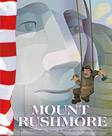
Mount Rushmore by Thomas Kingsley Troupe
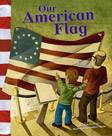
Our American Flag by Mary Lynn Firestone
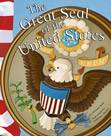
The Great Seal of the United States by Norman Pearl
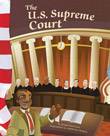
The U.S. Supreme Court by Anastasia Suen
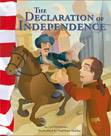
The Declaration of Independence by Lori Ann Mortensen
Dig into America’s past, and you might just be surprised to discover many fascinating facts you never knew!
 <
<
By Kathy Stemke
Need to keep your young children occupied this summer? Well, most kids love dinosaurs. Here are some great dinosaur books with some activities you and your children will love!
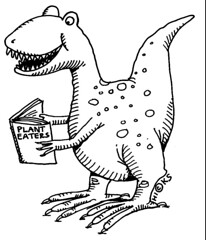
“Dinosaurs” That Swam and Flew. By David C. Knight
1. Great outdoor activity-get a basin full of water and a small tree or bush. Trace and make sponge dinosaurs from the book. Using sponge dinosaurs, swim, or fly each one inTO their habitat. (water, flying-onto a tree)
2. Tell students to use the names of dinosaurs to create new names for foods (Rhamphorhynchus raisins, Plesiosaurus pizza, Apatasaurus asparagus). Then have them write a menu for lunch using these “new foods”. Allow time for students to share menus. Plan a Dinosaur lunch for the entire class. Have students sign-up to bring some of the “new foods” from home.
3. Everyone sings this song, one child acts as the dinosaur, and all the others do the moving away actions.
(tune: I Wish I Were an Oscar Meyer Wiener)
Oh I want to be a giant grumpy Dino,?
That is what I really want to be!?
For if I were a giant grumpy Dino,?
Everyone would run away from me. . .?
Ahhhhhhhh!!!!!!!!??
Additional Verses:
jump away from me
crawl away from me swims away from me
flies away from me
Dinosaurs and Their Young by Russell Freedman
Bones, Bones, Dinosaur Bones by Byron Barton
1. Dino egg match-From a dollar store buy adult size dinosaurs, plastic eggs, and tiny dinosaurs. Put the tiny dinosaurs into the plastic eggs. Place the adults in a line with their names displayed. Each child opens an egg and matches it to its mother. Between each turn name all the dinosaurs.
2. Make a movie of the four stages of a dinosaur’s existence (egg, adult, dig up bones, put them in a museum).
Dinosaurs by Kathleen Daly
1. Have students take on the role of a particular dinosaur. If possible, mime the dinosaur, in addition to giving out one clue at a time: I weigh __________. I am __________ tall. I eat __________ . Allow four clues. If students haven’t guessed the dinosaur after four guesses, have the dinosaur-student provide the answer.
2. Provide students with plastic dinosaur figures, clay, dinosaur model sets, and so on. As a class, create a display or diorama that depicts a prehistoric time when dinosaurs roamed the world.
If the Dinosaurs Came Back by Bernard Most
1. Cut out a dinosaur and, using it as a pattern, make pages and construction paper covers for student dinosaur books. Allow students to use these materials to write their own stories about “if dinosaurs came back.” Provide time for the students to share their stories.
2. Write a letter to one of the dinosaurs in the story saying why you would like it to come back or why you wouldn’t.
3. List some dinosaurs and their lengths on the chalkboard. To help students understand how long the different dinosaurs were, measure their exact lengths with a ball of yarn (in which you have previously tied knots every 5 feet). Count by fives as the yarn is unrolled. Use a meter stick to convert these lengths to meters.
Dinosaur Dig by Kathryn Lasky
1. Have students become paleontologists (a scientist who specializes in finding and studying ancient fossil remains) by bringing clean chicken bones to school. Place each bone in wet, packed sand to make an imprint. Remove the bone and pour plaster of Paris into the imprint (or mold). Let it harden and then remove it from the sand. Have students label and display their fossils.
by Amy M. O’Quinn
Children love the unusual! So why not surprise them with a science exploration after dark?
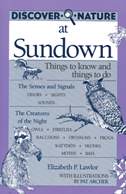
Discover Nature at Sundown by Elizabeth P. Lawlor
There are all kinds of enjoyable learning opportunities just waiting in the shadows, and everyone will have fun—all while experiencing the nocturnal side of nature!

Time for Kids: Spiders by the Editors of Time for Kids
Spiders, especially wolf spiders, are very common and easy to spot in your yard at night. According to the experts at the Arizona-Sonora Desert Museum, the spiders have a green ‘eye shine’ that is caused “by a tapetum in the eye which reflects light rays back through the eye retina and probably enhances the spider’s night vision.” For a neat activity, use a flashlight or small light that straps around the forehead and walk slowly through your yard, casting the beam towards the ground. You will be amazed at all the beautiful jewel-like glitters you’ll see. These are actually the spiders’ eyes! Shine the light closer to the ‘glitters’ and you’ll probably find a spider. Is it a wolf spider or some other kind? Find out!
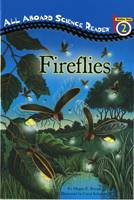
Fireflies by Megan E. Bryant
Fireflies or lightning bugs are fascinating creatures that sparkle and flicker in the summer woods. Light production in fireflies is due to a type of chemical reaction called bioluminescence, and the bugs light up to attract a mate. For a fun activity, catch and place several fireflies in a jar with a mesh top for a few minutes. Children love to examine these extraordinary insects and are captivated and delighted by their ability to produce cold light. Discuss the phenomena of bioluminescence before gently releasing the fireflies.
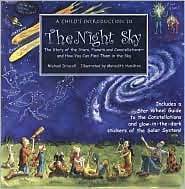
A Child’s Introduction to the Night Sky: The Story of the Stars, Planets, and Constellations–and How You Can Find Them in the Sky by Michael Driscoll
Few things are lovelier than a clear night sky filled with twinkling stars. In addition, studying the heavens with a young stargazer makes for a priceless memory. Although there is a plethora of scientific information concerning navigation, the atmosphere, telling time by the stars, mythology, or seasonal changes that would be interesting to pursue, simply looking upward at the stars and finding constellations or ‘pictures in the sky’ is a pleasurable pastime. How many constellations can you identify? Check out a book or find a relevant website and start gazing at the stars.
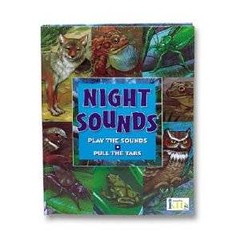
Hear and There Book: Night Sounds by Frank Gallo
Whooo, whooo do you hear hooting or calling out in the night? Owls, spring peepers, frogs, crickets and katydids all make interesting sounds that are fun to identify. As you walk around outside in the evening, do you hear noises that are familiar? Now, listen really hard. Do you hear animal calls or sounds that you may not have noticed before? Find out what they are and read about the insect or animal you have identified!
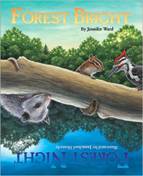
Forest Bright, Forest Night by Jennifer Ward
Exploring at night is an awesome way to generate enthusiasm, creativity and a love of the outdoors. While in the dark, you might jus
We’re pleased to announce that Margo L. Dill will be joining the faculty at the National Writing for Children Center in July. She will present her first teleclass for members of the Children’s Writers’ Coaching Club on July 6th.
 Margo Dill
Margo Dill
Margo L. Dill is a freelance writer, editor, and teacher, living in Mahomet, Illinois. Her work has appeared in publications such as Grit, Pockets, True Love, Fun for Kidz, Missouri Life, ByLine Magazine, The Chicago Tribune, Families, and The News-Gazette. She is a columnist and contributing editor for WOW! Women On Writing. She also teaches online classes for WOW! on social networking, blogging, and writing for children’s magazines. (http://www.wow-womenonwriting.com/WOWclasses.html) She is assistant editor for the Sunday Book page in The News-Gazette. Her first book, Finding My Place, a middle-grade historical novel, will be published by White Mane Kids. She writes a blog called, Read These Books and Use Them, (http://margodill.com/blog) for parents, teachers, and librarians. She owns her own copyediting business, Editor 911. (http://www.margodill.com/editor911.html) When she’s not writing, she loves spending time with her husband, stepson, and two dogs—Chester, a boxer, and Hush Puppy, a basset hound. You can find out more about Margo by visiting her website: www.margodill.com.
by Amy M. O’Quinn
Children learn by doing! This age-old maxim is certainly true, and the theory works in the kitchen as well as in the classroom. Almost all children, especially when they are young, enjoy helping their parents cook and dish up yummy culinary delights. Yes, it can be messy. Yes, you could probably do the job in a fraction of the time without little helpers underfoot. However, consider the rewards of letting your kids don an apron and wield a whisk:
1. First and foremost, children learn about teamwork and how to follow directions. And most importantly, you are not just creating meals together—you are creating memories!
2. Children learn about safety and cleanliness, but they also learn about good nutrition. With childhood obesity becoming an ever-growing epidemic, children need to be exposed to healthy foods and habits.
3. Surprisingly, many young adults do not know their way around a kitchen. Children who learn important culinary skills at a young age are already one-step ahead of the crowd. Cooking is a life skill that will pay off big dividends in the years to come. Learning how to be self-sufficient is also a big booster to self-confidence. Moreover, learning how to chop, stir, mix, roll, pour, and cut, etc. develops fine motor skills and hand/eye coordination.
4. The kitchen is a classroom!
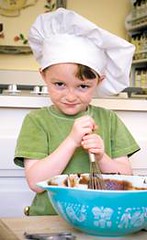
Below is a list of just a few educational things children learn while cooking:
History: Many families heartily embrace their culture and heritage, and learning to cook ethnic foods that the family has enjoyed for generations is a way to connect the present with the past, while ensuring knowledge for the future. Children can also learn about the history and origin of various other foods as well. In essence, cooking is universal.
Science: Cooking is really a science in itself. Children will learn first-hand about chemical reactions, how temperature affects food and cookware, what ingredients will combine well and those that will not. They also learn about the different food groups and how to classify. In addition, the five senses will get a good workout as the children learn about eye-appealing colors and combinations, or tastes/smells such as sweet, salty, bitter, bland, sour, pungent, sharp, and textures such as smooth, rough, grainy, soft, etc.
Math: Many parents discover that cooking is a great way to teach fractions, measuring, weighing, ordinal numbers, counting, geometrical shapes, symmetry, etc.
Creativity/Art: When children are allowed to experiment and try new skills in the kitchen, they develop creativity. An appreciation for pleasing colors, composition, and presentation is also fostered. Who knows, you might just be training a future chef, baker, or food artist.
Reading/Literature: Studying a recipe definitely enhances reading skills and comprehension and emphasizes the importance of following directions. But there are also many ways to incorporate great literature while learning to cook. For example, after reading Homer Price, make doughnuts. How To Make An Apple Pie and See the World is a great lead-in for baking pies. The Duchess Bakes A Cake might inspire cake baking and learning about yeast. And the Little House on the Prairie books definitely inspire learning about good old-fashioned vittles and down-home cooking. It might also be fun to plan a ‘theme’ meal and use relevant recipes and cooking skills to prepare for a special memory-making occasion. The ideas are endless!
Here are a few more suggestions for books that lend themselves to cooking activities, but you can find a whole list of books that contain recipes at Cooking Up Reading:
-Cloudy With A Ch

When Rabbi Yossie Greenfield, general studies principal at the Los Angeles Cheder, received a packet in the mail announcing a “Write, Draw and Win” project developed in conjunction with the second annual National Children’s Jewish Book Month, he enrolled his school right away.
“I was pretty sure the contests would help motivate our students to read,” he says. “What I didn’t expect was how involved they would become in the writing process-and as an educator that obviously makes me pretty happy.”
For Mrs. Sharon Katz, a second-grade teacher at Bnos Shulamith of Long Island, the project has proven to be an eye-opener in a different way. “My students are really excited by how the contests connect what they are learning in the general studies department with themes that are generally addressed only in their Hebrew classes.” In fact, she says, her students are so happily engrossed in reading and selecting Jewish books for the contests, she is now planning to introduce a Jewish-themed literature project in her classroom every year.
Those are gratifying words, indeed, to the folks at Artscroll Publishing, which last year launched the “May is National Children’s Jewish Book Month” program. To further the goal of getting kids excited about reading Jewish-themed books, the program was expanded this year to include writing and drawing contests based on books with Jewish content (from any publisher). Eighty-five elementary schools (grades one though eight)
around the country are participating in the contests, and submissions, which are pouring into Artscroll headquarters in New York daily are expected to number in the thousands.
The deadline for submissions is May 17; prize winners will be announced at the end of the month.
“There certainly have been enough studies that demonstrate how reading is tied in with a child’s success in school and beyond,” observes Miriam Zakon, Artscroll acquisitions editor and one of the contest judges. “I also believe there is great value in reading books that speak to a child’s own culture and traditions.”
Educators-and parents-would seem to agree.
“One of the most rewarding aspects of this program has been the positive feedback from schools and parents, especially those in towns and cities with small Jewish communities,” reports Artscroll vice president Rabbi Gedaliah Zlotowitz. “Aside from the inherent benefit of the contests-getting kids to not only read Jewish-themed books but really think about the books they’re reading – many of the participating schools and families are telling us they appreciate having their children involved in a project that connects them to the larger Jewish world.”
Having Jewish children read books with story lines they recognize and characters with whom they identify is a way of establishing and maintaining that connection, not only in May, but throughout the year, added Rabbi Zlotowitz.
He notes as well that the quality of books from Judaic publishing houses has come a long way in recent years. The selections have grown to encompass a wide array of picture books, individual chapter books and books in a series, many by award-winning authors and illustrators. What’s more, Jewish children’s books generally feature Jewish characters who, through thrilling adventures or humorous escapades, manage to learn and
teach important lessons.
Despite the considerable time and effort involved in reading the many contest submissions coming her way, says Mrs. Zakon,
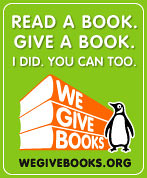
Penguin and Pearson Foundation just recently launched an innovative new online reading and giving program called We Give Books (www.wegivebooks.org). We Give Books is a free website that enables anyone with access to the Internet to put books in the hands of children who don’t have them, simply by reading online. It combines the joy of reading with the power of helping others, providing a platform for caregivers and educators to inspire children to become lifelong readers and lifelong givers.
We Give Books also helps some of the world’s best, most inspiring, literacy organizations by spreading the word about their great work and by providing books to the young people these organizations support.
SIMON SAYS
A weekly column from children’s author Simon Rose
A good way to attract repeat visitors to your web site is to add some interactive elements. You can always include some children’s games, whether they’re arcade type activities or simple puzzles. My own website has a page with word search puzzles related to the plots and characters of all of the novels, all of which I created myself.
Some authors similarly have crossword puzzles or quizzes about their own books. You might even have bookmarks that children can print out or colouring pages, if you’ve produced a picture book.
If you are offering any kind of classes or instructions for aspiring authors, maybe you can offer creative tips and advice for writers on a regular basis. If you’ve published a cookery book, you could post a recipe of the month. Perhaps you have a site dedicated to your non-fiction book about parenting, where again you can offer a new tip for families every week. The same would apply to a website showcasing your book on gardening, home renovation, pet care or really any topic or genre that lends itself to advice bulletins that people will look forward to seeing.
If your site has something cool to do, rather than simply having visitors reading your text, no matter how interesting your web copy may be, people will visit more often. They will also invariably stay longer, explore more of your pages, thus learning more about you in the process and increasing the chances that they will buy your books.
by Debra Beck, Author of
My Feet Aren’t Ugly, A Girl’s Guide to Loving Herself from the Inside Out

I’m having lunch with a friend, or am I?
We seem to be sitting across from each other at the same table, but we are not having a conversation. She is having a conversation with someone else, on her cell phone. She proceeds to ask this other person how she is doing, how is the dog, and did she pick up her dry cleaning. I sit there pretending to have lunch with her, when apparently she is having lunch with someone else.
How connected are we?
Technology keeps growing to make it easier for us to stay connected, but all it seems to be doing is making us more disconnected.
When I was young, if I wanted to talk to a friend, I ran across the street and talked to them face to face. Today, I can’t seem to make it through lunch with a friend without our cell phones ringing, pulling us away from each other.
I was having tea with my 17-year-old goddaughter, and, while sharing our brief hour together, she text-messaged 50 of the 60 minutes that we were together. She acted like she was talking to me, through occasional eye contact, but her attention was somewhere else.
The more technology grows, the further we grow from each other. It is up to us to make sure we stay connected. The biggest gap that I observe is with teens and their parents. It is hard enough to stay close to our teen with full time jobs, household duties, social obligations, and teens simply not wanting to be connected to their parents.
Teens are heavily into technology. They love it, and they are good at using it. How do we stay connected to our teens in such a disconnected world? It takes extra effort! How important is it to be connected to your child?
Our job as a parent is to teach our children how to become responsible adults who care about themselves and others. Can we do this if we are not connected to them? I don’t think so. What is a responsible person? It is someone you can count on, someone who makes good decisions for themselves without doing harm to others. Our teens have to feel comfortable to come to us with problems they are having if we are to influence them.
The first thing we have to do is make sure we are spending time face-to-face with our teens.
Second, we need to ask them questions. It’s important to help them problem solve in order to give them the opportunity to develop the tools they need to become responsible adults. It’s critical for the growth and development of our children to socialize face-to-face. It’s okay to allow them to have a computer, and a cell phone. It’s just not okay to let those objects become their entire way of communicating.
Here are some tips to help you stay connected to your kids:
1. Make sure you have time every day, whether it is at dinner or just during the evening together, when all phone are off and the family spends time together face-to-face, talking about whatever comes up.
2. Once a week, do something fun together. Play a game or do something outside the house that keeps you connected, not a movie.
3. Limit your teen’s computer time.
4. When you are having a conversation with your teen, ask him/her not to text message while talking to you, and explain why.
5. Encourage your teen to get together face-to-face with friends more, and spend less time texting and e-mailing friends.
6. Open your house for your teens to have friends over and make your house a place where they can feel comfortable.
7. Use every opportunity to talk to your teens about any issues, and keep your opinions to yourself. Let them explore their thoughts around certain topics. This teaches them how to make decisions for
The Passover Sedar Night: A Basic Information Guide about Passover
by
Dorit Sasson

The first Sedar night of Passover is just around the corner. What do you know about this major Jewish holiday?
Passover celebrates the journey of the Israelites from Egyptian slavery, probably in the 1200s B.C.E. The story of Passover (Pesach in Hebrew) is told in the Bible in Chapter 12 of the Book of Exodus. It begins with the death of Joseph and the rise of a new Egyptian Pharaoh, which brings in an era of slavery for the Israelites.
The celebration of Passover begins after sundown on the 14th day of Nissan, the first month of the Jewish year.
The central activity of the Pesach celebration is the telling of the story of the Exodus to future generations. Jewish families gather in their homes at a ceremonial feast called the Seder, which means ‘order’ in Hebrew. At the Seder, Jews read the story of the journey of the Israelites from a significant book known as the Haggadah. The Haggadah not only tells the story of Passover, but also gives procedures for conducting the seder. There are also special foods, which symbolize the journey from Egypt which have their place on the Passover seder plate and are referred to in the Haggadah.
Passover Symbols
There are special symbols on the Passover sedar plate. Each symbol has special significance to the theme of religious freedom for the Jewish people.
• Matzah – otherwise known as unleavened bread. According to the Bible, when the Israelites fled from religious persecution, they did not have time to let their bread rise. They made flat, unleavened bread instead. Therefore, Jews eat matzot. (plural form for matzah).
• Horseradish – This food underscores the bitterness of the Jewish experience.
• Haroset (Hebrew) – A combination of chopped nuts and apples (called Haroset in Hebrew) symbolizes the building mortar used by the Hebrew slaves in their forced labor.
• Karpas – a vegetable, usually parsley, is dipped in salt water and eaten. The vegetable symbolizes the beginnings of the Jews; the green ‘Parsley’ represents the fields of Goshen while the salt water symbolizes the tears due to the years in bondage.
• Maror – or bitter herbs. Sometimes romaine lettuce is used but most Jews use raw horseradish to symbolize the bitterness of slavery. The maror is dipped in charoset for building the hope for sweeter times for the Jewish people.
Special Passover Traditions
• Hiding the Afikoman – Children love when they have to find the piece of matzah that is hidden. Different families have different traditions relating to the Afikoman. Some families give a special gift like money.
• A retelling of the story of the Exodus from Egypt and the first Passover. This begins with the youngest person asking The Four Questions. The Four Questions are also known as Mah Nishtanah (Why is it different?), which are the first words of the Four Questions, and is often sung.
Preparing for Passover
Passover is a very difficult and enormous holiday to prepare for. Jews are not allowed to keep wheat, rye, barley, oats and spelt, which are typically used for bread making – otherwise known as ‘chametz’. Chametz is sold to non-Jews. There should be no crumbs in the house. All areas that have contact with food must be cleaned from top to bottom. Observant Jews start cleaning their houses a few weeks before Passover. Pots and pans are literally disinfected.

Picture
by Amy M. O’Quinn
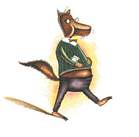

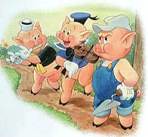
Good readers get the big picture. They comprehend the meaning of the text and better understand what the author is trying to convey. In addition, learning to identify a character’s point of view in a simple picture book or story is a great way to introduce children to an important aspect of being a good reader.
It will also prepare them for heavier literature when they get older when identifying a character’s point of view is vital to understanding the plot and the underlying meaning or theme of the story. It is a skill to develop through the years, and having a basic working knowledge of this device will also help students learn about the first person, second person, third person, omniscient, and limited omniscient points of view as they mature as readers and writers.
Point of View (POV):
POV is simply the standpoint or position from which the reader gets to observe, consider, or ‘hear’ the story. For this particular article, I would like to concentrate on a first person narrative POV from a well-known children’s story.
A Simple Way To Teach POV:
Almost everyone knows the story of The Three Little Pigs and the Big Bad Wolf. The pigs are the victims and the wolf is the villain. We ‘hear’ the story from the viewpoint of the three little pigs, and we feel sorry for them—right down to the hairs on their chinny-chin-chins! The wolf is a mean, evil character, and we are happy to see justice served in the end. Obviously, he deserves what he gets!
So gather your students around and read the traditional story of The Three Little Pigs. Or have them act out the story with parts—using appropriate voices and simple costumes if possible. My children always use a high, squeaky voice for the pigs and a low, growly voice for the wolf. Discuss the elements of the story and the perspectives of the characters. Who is ‘good’ and who is ‘bad’? Who is right and who is wrong? How did the pigs feel and react when the wolf came to each of their doors?
A Twist:
But what if there is a chance that the traditional tale we all know and love might not be the ‘real’ story! What if the wolf has a different version of the story to tell? What about his POV?
The True Story of the Three Little Pigs:
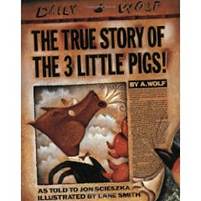
Here is where the fun begins! Purchase or check out Jon Scieszka’s hilarious book, The True Story of the 3 Little Pigs from your local library and read it to the students. As Alexander T. Wolf, the narrator, tells his audience on the very first page:
“Everybody knows the story of the Three Little Pigs. Or at least they think they do. But I’ll let you in on a little secret. Nobody knows the real story, because nobody has ever heard my side of the story.”
Of course, in this version, we hear from Alexander T. Wolf. He claims that he had a cold and all that he wanted to do was borrow a cup of sugar from one of his neighbors when all the trouble began. According to him, he was framed!
Now discuss the differences in the two stories and the POVs. Compare and contrast. Make a comparison chart if possible.
The Verdict:
So who is telling the truth, the pigs or the wolf? Who is more believable? Why? Should Alexander T. Wolf have been

Start a book club at your school, or bring a children’s book author to visit your students!
Target awards grants to schools, libraries and nonprofit organizations to support programs such as after-school reading events and weekend book clubs. Click here to learn more!

This week’s LIVE teleclass for children’s writers will take place on Thursday, March 11, 2010, at 3:00 CST. The topic of the teleclass is Marketing Tips for Children’s Authors & Aspiring Children’s Book Authors.
Click here to learn more about the teleclass and to register!
Move & Groove: A Weekly Column from children’s writer, photographer, and dancer Grier Cooper

The human brain is a funny thing in its tendency to quickly reach boredom, Spend too long doing the same thing, or do the same thing too many times, too often, and suddenly there you are. Perhaps the subconscious desire for change serves an important purpose in driving us to continually try new things or different approaches in order to keep our lives dynamic and fresh.

This especially true than when working with children. Young brains haven’t had time to develop much in the way of patience, so focusing and repetition, while necessary, are also difficult. Sometimes they’ll get bored very quickly. Here are a few ideas to help liven things up:
Add something surprising. If you want to get their attention, try something strange, exciting, or gross. Try wheelbarrow races, jumping contests, or high-speed butt-shaking.
A little humor goes a long way. Laughter is powerful medicine, and it rules supreme with children. Have them do a silly walking contest, or better yet, the “underpants dance”, which can be their personal interpretation. The movements won’t matter at all, but the title is sure to get them going.
Use a new technique. If you always begin standing, then start the dance on the floor instead. If you usually teach particular choreography, then play music and let them dance freeform. For an added plus, make it into a game of “freeze dance”, where children freeze in position whenever you randomly turn off the music.
Try a change of scenery. A change of environment can break up routine quickly. Try moving outside in the grass, or in a different room, or with the lights off (Pass out flashlights ahead of time if you have them).
Change your music often. Even teachers need inspiration, and new music always spices things up.
“Bored” is a five-letter word. But with a few simple techniques, you can eliminate it from their vocabulary permanently. We all need fresh ideas, challenges and stimulation. It only requires a few minutes of planning ahead. The results are worth it!
by Amy M. O’Quinn
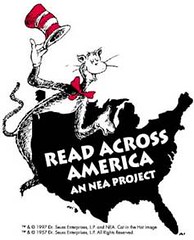
The more that you read, the more things you will know. The more that you learn, the more places you’ll go.
~Dr. Seuss
Mark your calendar for March 2nd! Why, you may ask? Well, at our home we will celebrate my daughter’s tenth birthday on that day. But other children across America will also be celebrating the birthday of beloved author, Dr. Seuss, as well as participating in ‘Read Across America’, sponsored by the National Education Association.
What is Read Across America?
In 1997, a small task force at NEA came up with the big idea to set aside one day to really celebrate reading and motivate children across the country to pick up a book and read. They wanted the whole event to be exciting and inspiring—and to promote a love of reading. The task force also decided that March 2nd, the birthday of Theodor Seuss Geisel (better known as Dr. Seuss) would be the perfect date. Thus, ‘Read Across America’ was born, and the first annual celebration was held on March 2, 1998.
According the NEA website, “Motivating children to read is an important factor in student achievement and creating lifelong successful readers. Research has shown that children who are motivated and spend more time reading do better in school.”
How does it work?
Although the NEA created and sponsors ‘Read Across America,’ teachers, parents, librarians, bookstore personnel, and other community volunteers at the local level organize and implement all kinds of exciting events to celebrate reading and get children involved in special literacy activities. There are many great ideas on the NEA/RAA website, as well as state educational association websites. The possibilities are endless.
 Dr. Seuss (1904-1991)
Dr. Seuss (1904-1991)
What child doesn’t love a Dr. Seuss book? The rhythm and rhyme are delightful, and everyone has a favorite. My children enjoyed all the Dr. Seuss books, but they especially liked Green Eggs and Ham, Mr. Brown Can Moo, Can You? and The Cat in the Hat. In fact, they can all recite most of Green Eggs and Ham from memory. Would you? Could you?
When we first began homeschooling, I quickly discovered that Dr. Seuss books were perfect for oral reading practice to enhance fluency. The children loved the nonsensical language, yet they were able to experience reading success because of the simple words, repetition and familiarity of ‘old friends’ they’d known for years. Beginning readers need to feel successful; it motivates them to keep learning. Plus, the stories written by Dr. Seuss are just plain fun, and everyone needs a good giggle or chuckle from time to time.
How Can You Be Involved in Read Across America?
There are events and activities scheduled all over the country—in large cities and small communities. Chances are, the local school system, your child’s teacher, or your neighborhood librarians have already planned some special things for March 2nd. Visit the NEA website or your state educational association to find some fabulous fun near you. Perhaps you may even decide to volunteer or help organize some events.
If you have preschool children or are a homeschooling parent, you can also plan some activities to do with your child at home. Although we advocate reading ALL year long, it is still fun to have a special day to do something just a little bit different.
A Few Simple Ideas:
-Read Green Eggs and Ham—then MAKE green eggs and ham. Add a
Move & Groove: A Weekly Column from children’s writer, photographer, and dancer Grier Cooper

Out on the west coast, signs of spring are beginning to emerge: rolling hillsides are covered with brilliant emerald grasses, and flowering cherry and plum trees are beginning to bud. We have rounded the corner of the darkest time of year, and the new blooms are so welcome that people are walking with a spring in their step and a song in their hearts; this is what joy looks like when it is expressed in the body.

We have sayings about this feeling, such as “jump for joy.” Joy does make us feel lighter, like floating. It is such a natural part of being human, such a wonderful part that we all enjoy. Why not celebrate that feeling with movement?
Begin with playing music that inspires the feeling of joy, such as Vivaldi’s Four Seasons. Next, try exploring the basic components of joyful movement. Imagining that your heart is full, try moving across the floor, walking or running, feeling as light and free as possible. To stay light on your feet requires stepping more gently, and slightly on tiptoe. Skipping is another joyful movement, as is any sort of jump. As you skip, encourage students to use their full range of movement, incorporating the arms and upper body. How many different ways can you skip? High, low, fast, slow, turning… there are lots of options. The same holds true with jumping, although there are even more variables to play with. For instance, try jumping with your legs together, split apart, straight, bent, or any other combination.
Once you have explored all of the components of joyful movement, have your students put the pieces together into their personal version of the dance. After letting everyone dance simultaneously, try one last variation by having the students form a large circle and have each student take a turn in the center. Those in the circle can continue dancing in place if they wish, taking care to give the person in the center and the other members of the circle enough room to move.
Spring may not be in the air quite yet, but we can rest assured it is right around the corner. In the meantime, we can carry the associated feelings of hope and joy in our hearts and keep our eyes open for the first signs of new life.
**************
For more articles and other resources about dance and movement for kids, visit www.griercooper.com and www.becomearealballerina.com.
Listen to this Interview with children’s author, and instructor for the Children’s Writers’ Coaching Club, Simon Rose on Robin Falls Kids:

by Debra Beck

What every parent wants for their child is to give them the tools to become mature adults that know how to make good decisions for themselves.
So how can we help our kids learn how to make good decisions for themselves? When they leave the house at 18 years old, when we are nowhere around, and they are faced with a problem, that they can look into their bag of tools and make a decision that is in their best interest.
The way I see it is if you want to get good a something, you have to practice. So, we have to give our kids practice with making decisions. Every time an issue arises, whether it be their issue or and issue of someone else’s they are talking about, is our chance to let them practice. When something comes up where a decision needs to be made, instead of saying “this is the way it is, because I’m your parent”, try sitting with them and discussing the problem. Right down the pros and cons and ask them what decision would they make and why. Don’t get emotionally involved, meaning try to keep your fears out of it.
Here’s an example: Your daughter says something about a girl at school, who is smoking cigarettes at 12 years old. Instead of freaking out and saying “ are you kidding, she is way to young to smoke, do her parents know about this.” This is an opportunity to communicate with your teen. By the way the definition of communication is: the exchange of information between individuals, not the opinion of one person. Ask your teen what she thinks about smoking, what are the things that are cool about it, and what are the things that are not good about it. You may be saying, “COOL ABOUT IT, are you crazy, there is nothing cool about it”, again your opinion is not communication. I guarantee you there are kids that think smoking is cool. What are the pro’s and con’s, how they feel about smoking, and what they think about this teen smoking at 12, if they think it is a good decision or not. I’m not saying if they come up with more reasons to smoke then not, that you buy them a pack of cigarettes.
Teens are pretty smart; give them the opportunity to show you they have a good head on their shoulders. So again, the goal is to help them practice making good decisions, don’t make the decisions for them through your opinions. What we want is are teens to feel free to come to us with anything, if they feel judgments, which most of the time your opinions will feel like, they will not want to communicate with you.
So here are the tips plain and simple.
Start communicating with your teen; leave your opinions out of the conversation.
Every time something comes up that appears to be a good topic, ex: smoking, drinking, body image, sex, drugs, friendships, careers, schools, style, okay any topic will do, practice, practice, practice!
Practice by asking them questions about how they feel about it, go over the pros and cons, and ask them what they would do and why.
The more they learn how to make good decisions, the better decisions they will make for themselves when you are not around. The more confident they will be with who they are and continue to make good decisions. Would you agree that you as a parent have more experience with decision-making then your 13 year old? Of course you do, so make sure they feel free to come to you to learn this process.
 Debra Beck is the author of My Feet Aren’t Ugly, A girl’s guide to loving herself from the inside out. Learn more about her and her book at
Debra Beck is the author of My Feet Aren’t Ugly, A girl’s guide to loving herself from the inside out. Learn more about her and her book at
www.myfeetarentugly.com.
0 Comments on Self Reliance and Independence: Giving Our Teens the Ultimate Gift as of 1/1/1900
by Kathy Stemke
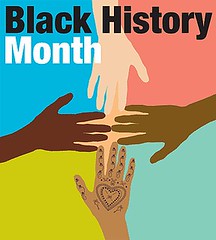
Black History Month is a time to create greater awareness of a strong and powerful culture with a rich history. The following books and activity ideas will keep children engaged as they learn about inspiring black Americans and their culture.
Bestselling and award-winning author, HYPERLINK Nancy I. Sanders has published over 75 books including A Kid’s Guide to African American History and D is for Drinking Gourd: An African American Alphabet.
Her new book is America’s Black Founders, for ages 9 and up. Through the petitions they wrote, the sermons they preached, the literature they published, the churches they built, and the organizations they formed, African Americans influenced the birth of a new nation in powerful and far-reaching ways. Click here for several activity ideas from Nancy’s websiteClick here for several activity ideas for Black History month from Nancy’s website.
Ella Fitzgerald: The Tale of a Vocal Virtuosa is an excellent example of a quality book that conveys black history in kid-appealing way. Ella’s story is told through the perspective of a cat, “Skat Cat Monroe,” who pulls in readers in with rhythm and rhyme.
LANGUAGE ARTS ACTIVITIES
Use words from this story to practice finding the number of syllables in words. How many syllables are in Skat? Fitzgerald? determination?
Have students look up words from the story in the dictionary and share reports either written or verbal. Let students determine alphabetical order of the words.
MATH ACTIVITIES
We learn in A Note From the Author that Ella was born in 1917. The story tells us that in 1935 the Harlem Opera House signed Ella as a featured singer. How old was Ella?
We learn in the story that Ella and Dizzy Gillespie headlined a sold-out performance at Carnegie Hall in 1947. If she was born in 1917, how old was Ella in 1947?
We learn in A Note From the Author that Ella died in 1996. If she was born in 1917, how old was Ella when she died?
MUSIC & MOVEMENT ACTIVITIES
“A-Tisket, A-Tasket” was a hit song sung by Ella Fitzgerald that began as a “jump rope jive.” Jumping rope is an excellent work out and helps children develop timing and balance. Have your students jump rope along to Ella’s music and encourage them to create their own jump rope songs.
Dizzy by Jonah Winter features the famous Dizzy Gilliespie.
VOCABULARY ACTIVITIES
There are many instruments featured in the illustrations of Dizzy. Passing the book around, make a list of the instruments your group can identify. There’s a trumpet, sax, French horn, bass, piano and drums. Now brainstorm to create a list of instruments not featured in this book.
MATH ACTIVITIES
Review the music math words for solo, duet, trio, quartet and quintet. Call students up with instruments in singles and small groups and let the group name the band with these math music words.
ART & MUSIC ACTIVITIES
Painting to the Beat: Provide paper, watercolor paints and space for each child to paint. Play one of Dizzy Gilliespie’s many CDs that are available at your local library. Encourage children to paint to the beat. Ask them to consider what “color” a song feels like. Be sure to have them write the title of the song, along with their name and date on their musical masterpiece.
MOVEMENT ACTIVITIES
A Jazz Parade: Provide children with handmade instruments or objects with which they can create a beat. Turn on the music and ha

BOSTON – The American Library Association (ALA) today announced the top books, audiobooks and video for children and young adults – including the Caldecott, King, Newbery and Printz awards – at its Midwinter Meeting in Boston.
A list of all the 2010 literary award winners follows:
John Newbery Medal for most outstanding contribution to children’s literature
“When You Reach Me,” written by Rebecca Stead, is the 2010 Newbery Medal winner. The book is published by Wendy Lamb Books, an imprint of Random House Children’s Books.
Four Newbery Honor Books also were named:
“Claudette Colvin: Twice Toward Justice” by Phillip Hoose and published by Melanie Kroupa Books/Farrar Straus Giroux, an imprint of Macmillan Children’s Publishing Group
“The Evolution of Calpurnia Tate” by Jacqueline Kelly and published by Henry Holt and Company
“Where the Mountain Meets the Moon” by Grace Lin and published by Little, Brown and Company Books for Young Readers
“The Mostly True Adventures of Homer P. Figg” by Rodman Philbrick and published by The Blue Sky Press, An Imprint of Scholastic Inc.
Randolph Caldecott Medal for most distinguished American picture book for children
“The Lion & the Mouse,” illustrated and written by Jerry Pinkney, is the 2010 Caldecott Medal winner. The book was published by Little, Brown and Company Books for Young Readers.
Two Caldecott Honor Books also were named:
“All the World,” illustrated by Marla Frazee, written by Liz Garton Scanlon and published by Beach Lane Books
“Red Sings from Treetops: A Year in Colors,” illustrated by Pamela Zagarenski, written by Joyce Sidman and published by Houghton Mifflin Books for Children, Houghton Mifflin Harcourt.
Michael L. Printz Award for excellence in literature written for young adults
“Going Bovine,” written by Libba Bray, is the 2010 Printz Award winner. The book is published by Delacorte Press, an imprint of Random House Children’s Books, a division of Random House.
Four Printz Honor Books also were named:
“Charles and Emma: The Darwins’ Leap of Faith” by Deborah Heiligman, published by Henry Holt Books for Young Readers, an imprint of Macmillan Children’s Publishing Group
“The Monstrumologist” by Rick Yancey, published by Simon & Schuster Books for Young Readers, an imprint of Simon & Schuster Children’s Publishing Group
“Punkzilla” by Adam Rapp, published by Candlewick Press
“Tales of the Madman Underground: An Historical Romance, 1973” by John Barnes, published by Viking Children’s Books, a division of Penguin Young Readers Group.
Coretta Scott King (Author) Book Award recognizing an African American author and illustrator of outstanding books for children and young adults
“Bad News for Outlaws: The Remarkable Life of Bass Reeves, Deputy U.S. Marshal,” written by Vaunda Micheaux Nelson, is the King Author Book winner. The book is illustrated by R. Gregory Christie, published by Carolrhoda Books, a division of Lerner Publishing Group, Inc.
One King Author Honor Book was selected
“Mare’s War” by tanita s. davis and published by Alfred A. Knopf, an imprint of Random House Children’s Books, a division of Random House, Inc.
Coretta Scott King (Illustrator) Book Award
“My People,” illustrated by Charles R. Smith Jr., is the King Illustrator Book winner. The book was written by Langston Hughes and published by ginee seo books, Atheneum Books for Young Readers.
One King Illustrator Honor Book was selected
“The Negro Speaks of Rivers,” illustrated by E. B. L








 0 Comments on A Look at Lady Liberty as of 1/1/1900
0 Comments on A Look at Lady Liberty as of 1/1/1900






 <
<



























 Debra Beck is the author of My Feet Aren’t Ugly, A girl’s guide to loving herself from the inside out. Learn more about her and her book at
Debra Beck is the author of My Feet Aren’t Ugly, A girl’s guide to loving herself from the inside out. Learn more about her and her book at

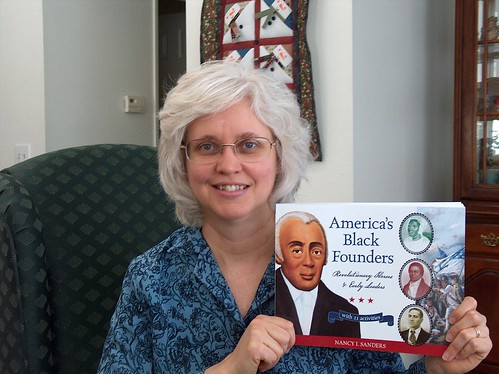

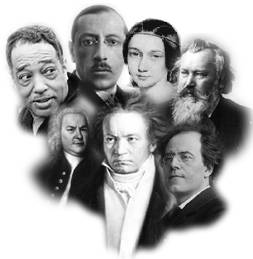

Have fun with these fun activities.